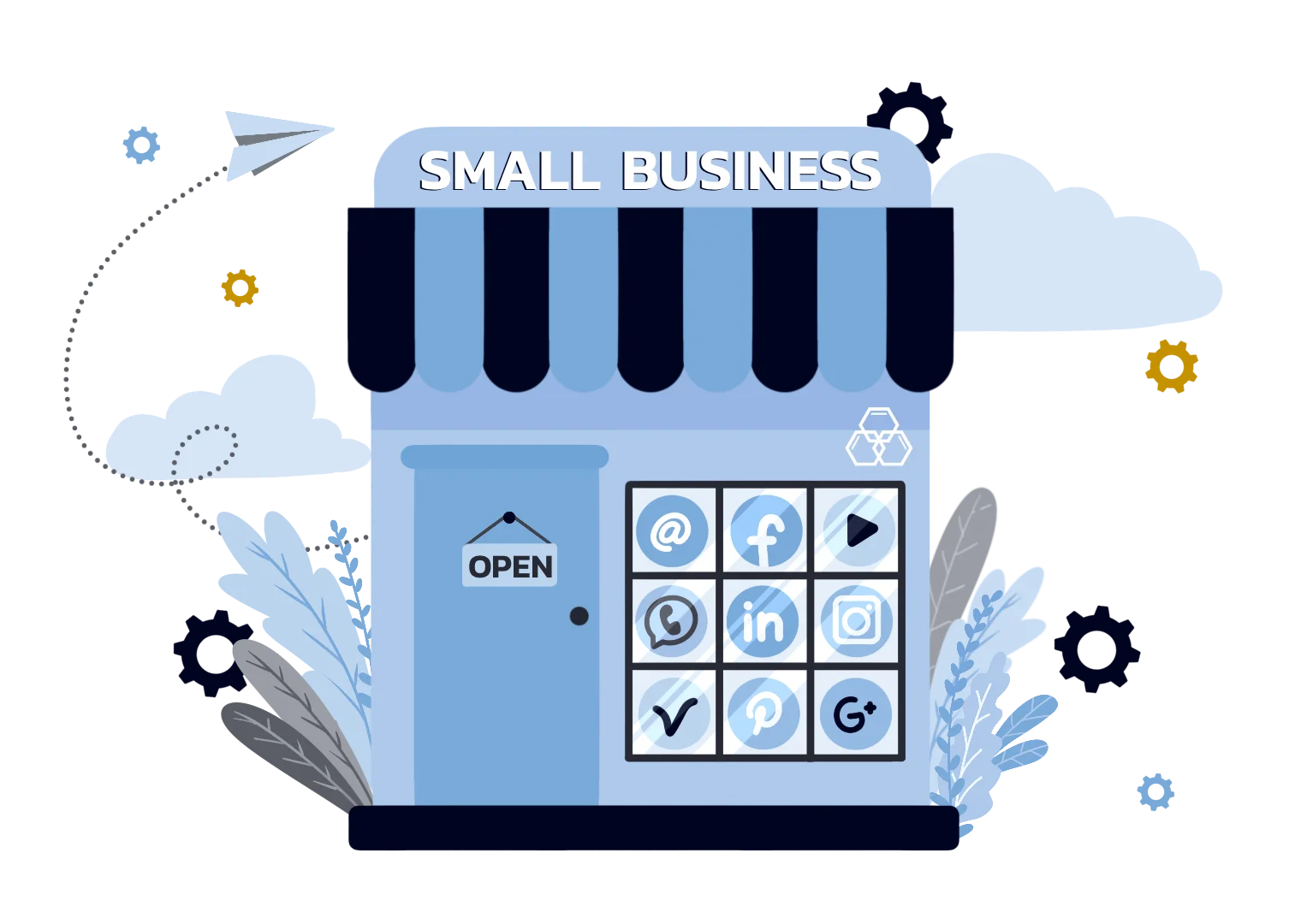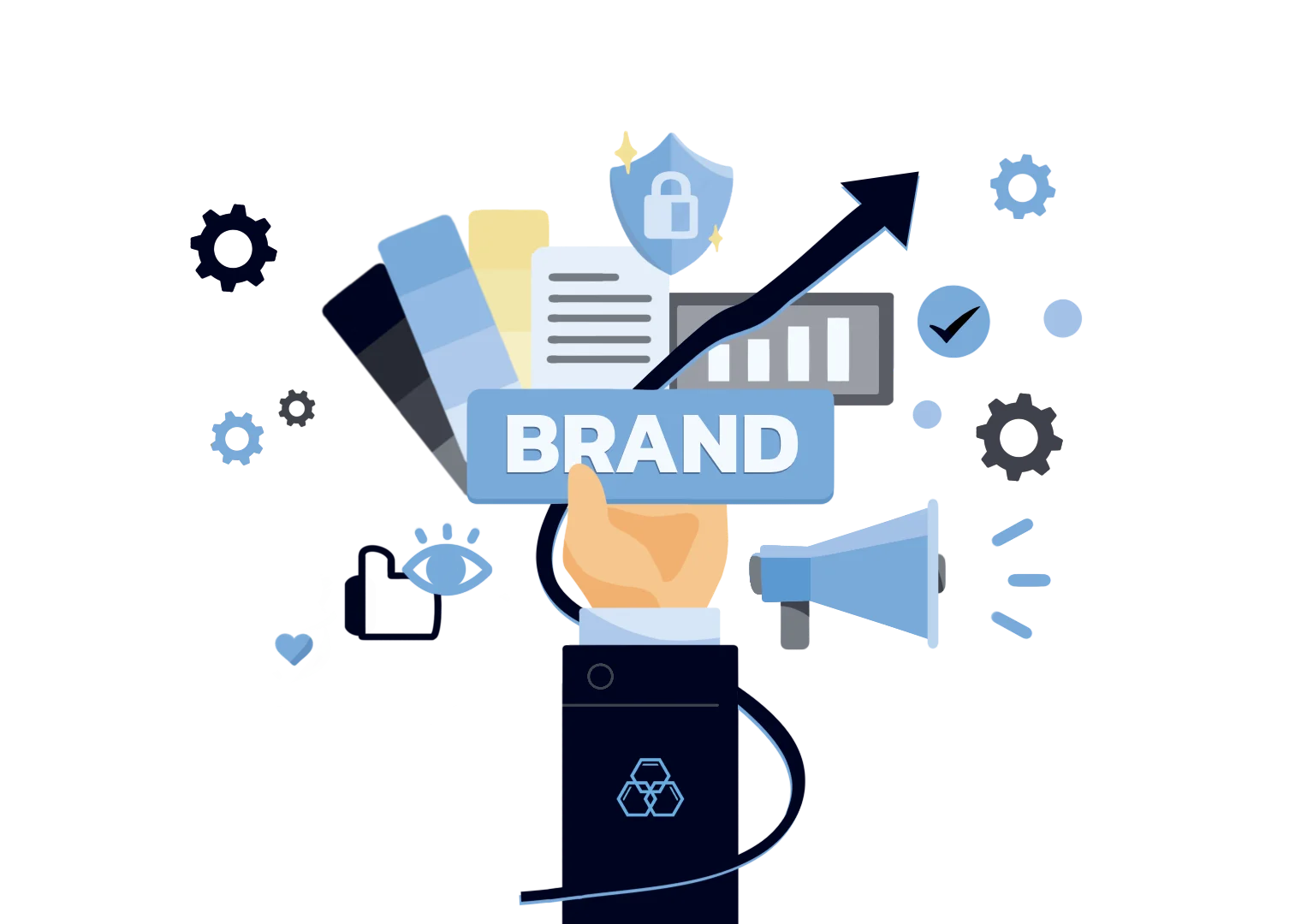Brand positioning is much more than how your logo or product design stands out from competitor brands. How your brand is positioned in the market will tell your customers and ideal buyers how well you can meet their needs and determine how they view you. It also determines who your competitors are in your category. It will guide how much people or businesses will pay for your products or services.
But what is brand positioning exactly?
What Is Brand Positioning?
The term "brand positioning" was coined by Jack Trout in 1969 to mean what "advertising does to the product in the prospect’s mind." Since then, its meaning has expanded. Brand positioning is about owning a unique position in your target customer's mind and how you present yourself to be what you want your business to be to customers.

Here are some examples:
- Price-based positioning strategy - Their messaging focuses on value and accessibility, making them a popular option for budget-conscious consumers.
- Innovation-based positioning strategy - Their brand positioning emphasizes their leadership and commitment to a greener future. This resonates with environmentally conscious consumers and those seeking cutting-edge technology.
- Emotional connection positioning strategy - Their campaigns fosters an emotional connection with their target audience.
- Customer service positioning strategy - Their brand positioning focuses on creating personalized experiences and exceeding expectations builds trust and loyalty.
Brand positioning lies at the core of every brand's marketing strategy. It is the guide for any of the brand's tactical and strategic activities to help its products or services stand out among its competitors.
Why Is Brand Positioning Important?
Modern B2B marketing leaders see that branding is vital for growth and their marketing strategy are focused on creating highly engaging brand customer experiences. It's easy to see why brand positioning is important.

1. Tells the Story of Your Brand
Brand positioning is the foundation of your brand identity. It's how you communicate your core offering to your target market. This goes beyond just features and functions. It's about the value you deliver and the problem you solve for your customers.

For example, let's say you sell athletic shoes. Sure, you could simply say you offer comfortable footwear for running. However, a strong brand position might be: "We empower athletes to achieve their personal best by providing innovative shoes that combine performance and comfort." This statement goes beyond the technical aspects and taps into your audience's emotional desires—the feeling of accomplishment and pushing their limits.
2. Gives the Advantage of Differentiation
In a world saturated with options, customers are constantly bombarded with choices. Brand positioning gives a competitive advantage. It clarifies how you differ from the market, even if you offer similar products.
Remember, differentiation doesn't always have to be about technical specifications. It can be about the experience you provide, the values you represent, or the emotional connection you create with your audience.
Take, for instance, two coffee shops. Both sell lattes and cappuccinos. One might position itself as a fast and convenient grab-and-go option, perfect for busy mornings. The other might focus on creating a warm, inviting atmosphere, ideal for relaxing and lingering with friends. Both offer coffee, but they target different needs and preferences.
3. Builds Emotional Connections
Price can be a factor in a customer's decision, but it's not the only one. Brand positioning allows you to tap into the emotional side of buying.

Think about Apple products. They may not be the cheapest option on the market, but their brand positioning around innovation, design, and user experience resonates with a loyal customer base. People are willing to pay a premium because they connect with the brand's values and the feeling of owning a piece of that identity.
How To Create a Strong Brand Positioning
1. Know Your Ideal Customer
By pinpointing your ideal customer's demographics, interests, and needs, you can tailor your brand positioning to speak directly to them. It's the difference between shouting into the void and having a conversation that captures their attention.

So, how do you get to know your ideal customer? One of the best ways to do it is to develop a buyer persona. This is a detailed profile that outlines your ideal customer's characteristics, including:
- Demographics: Age, gender, location, income level, etc.
- Needs: What problems are they trying to solve?
- Wants: What are their aspirations and desires?
- Behaviors: How do they research and make purchasing decisions?
- Values: What is important to them?
2. Deep Dive on Your Competitors
You've identified your ideal customers, who are likely bombarded with choices. To stand out from the crowd, you need to understand the competitive landscape. This is where a deep dive into your competitors comes in.

Examine your competitors to:
- Identify Strengths and Weaknesses: Analyze what your competitors do well. What are their strengths in terms of branding, marketing, product features, or customer service? Conversely, what areas seem like weaknesses? Are there gaps in their messaging or unmet customer needs?
- Learn from Their Messaging: Consider how your competitors position their brand. What messages are they sending? How do they frame their product or service? Understanding their approach can help you refine your messaging and identify areas for differentiation.
- Discover Market Gaps: Through competitor analysis, you can uncover gaps in the market that your brand can fill. Are there specific customer needs that aren't being fully addressed? Can you offer a unique value proposition that sets you apart?
Take a deep dive into your competitors. Gain valuable insights that can inform you from great brand positioning examples. Identify opportunities to differentiate your brand and offer a compelling alternative.
Target underserved segments. Perhaps your competitors haven't fully tapped into a specific customer segment. Use your research to tailor your brand positioning to resonate with this underserved audience.
3. Define Your Unique Value Proposition
Your brand positioning hinges on your unique value proposition (UVP). This clear, concise statement captures the essence of what makes your brand special and valuable to your target audience.

Think of it as your brand's elevator pitch. In a short timeframe, you need to explain:
- Problems you solve: Every brand addresses a customer's need or pain point. Your UVP should clearly define the issue you help people overcome.
- Things that make you different: Here's where competitor analysis comes in. Highlight the unique aspect of your product, service, or approach that sets you apart.
- Benefits you offer: Ultimately, your UVP should communicate the tangible value you deliver to your ideal customer. How does your brand make their life easier or more fulfilling?
Create a strong UVP that focuses on your product or service's benefits, not just the technical specifications. People care about how your offering improves their lives, not the nuts and bolts behind it. So, translate those features into clear, concise benefits that resonate with your target audience.
Avoid jargon and complex language. Your UVP should be easy to understand and remember, like a catchy song lyric that gets stuck in your head. Whenever possible, quantify the value you offer. Don't just say you "save time and money," quantify it by saying you "reduce costs by 20%." Numbers add impact and make your UVP even more compelling.
4. Craft Your Brand Story
Your brand story is a narrative that weaves together:
- Your Brand Personality: What is your brand's voice and tone? Are you playful and approachable or sophisticated and authoritative? Your story should reflect your brand personality and resonate with your ideal customer.
- Your Core Values: What principles guide your brand decisions? Highlighting the values in your story shows your audience what you stand for and builds trust.
- Your Mission: What is your brand's purpose? Why do you exist beyond simply turning a profit? Your story should convey your mission and inspire your audience.

The first step is identifying a central theme, the core message you want your story to convey. Sharing your origin story and the inspiration that sparked your brand's creation is another powerful way to connect. People are naturally curious about the "why" behind a business; your origin story can bridge a deeper connection. Every brand faces obstacles, and sharing your struggles and how you overcame them showcases your resilience and dedication.
Your brand story should position your ideal customer as the hero. Show how your product or service helps them achieve their goals and overcome their challenges. By following these steps and harnessing the power of storytelling, you can create a brand narrative that resonates deeply with your audience.
5. Consistency is Key: Weaving Your Brand Positioning into the Fabric of Your Business
Brand positioning isn't a one-time marketing campaign; it's an ongoing process that requires a consistent application.
Here are some key areas to focus on:
- Messaging: Ensure your brand message is clear and consistent across all marketing materials, website copy, social media posts, and even internal communications.
- Visual Identity: Maintain a consistent visual identity, encompassing your logo, color palette, fonts, and imagery across all channels.
- Customer Experience: Train your customer service team to embody your brand personality and deliver experiences that reflect your brand positioning.

Consistency is the glue that holds your brand positioning together. Ensure a cohesive experience across all touchpoints creates a strong, memorable brand that resonates with your target audience and drives results.
Remember, brand positioning is a journey, not a destination. By consistently applying your core message and values, you build a brand that stands the test of time and establishes lasting connections with your customers.

How To Improve Your Brand Position Over Time
Many factors will require a brand to change or improve its brand position. For instance, business goals might change, or the needs of target buyers might be changing. To keep an effective positioning strategy and continue to have a competitive edge in a crowded market, brands must be adaptable. Here are some tips:
- Listen to your customers: For your brand position to resonate with your customers, potential customers, or target audience, you need to listen to what they're saying and what their consumer preferences are. Conduct some social listening. Send out surveys, set up focus groups, or talk to them through social media or events and gain insights to improve your message.
- Refocus your statement: Has your brand lost its focus trying to do so much? If so, you must return to the basics and determine if your current brand positioning is still effective.
- Have a clear vision: Use data and insights to create a vision for your brand's repositioning or improvement. These will support you through tough conversations and help you measure success.
- Test it out: A business decision like a brand repositioning isn't always a sure go. To ensure your new plan works, you must test it out with your audience. A/B test your control statement against your brand positioning statement and see what works better and how people react.
- Keep a long-term view: It will take time to change consumers' minds, revamp the customer perception of what you offer, and have them believe in what you offer today rather than previously. Your repositioning may also target new prospective customers, so remember that your brand may be entirely new to them. For some brands, this may take years. That's why you must consider the investment, marketing, acquisitions, and additional resources you need to shift your positioning.
Conclusion
Brand positioning is the difference between your brand being a household name or another company floating through a broad market. Creating strong brand positioning strategies isn't a one-time event, however.
Even after establishing your current brand positioning framework, you should always be flexible and willing to fine-tune your positioning concept and statement to ensure the best customer perception and relationships possible.
Feeling stuck with building your own brand positioning strategy? Let us know how the Evolv team can help you!
Also, check out our blog and be updated on the latest trends and insights on branding.






